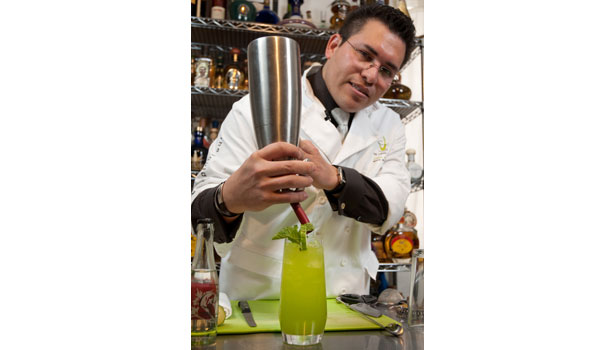Fruit on Base
A Little Fizz
Hot and Cold
Datassential also notes several over-arching trends in drinks, beyond specific flavor patterns. Health has infiltrated the pleasure-beverage scene. Using natural agave sweeteners and adding antioxidant-rich ingredients (pomegranate, green tea) make juice and iced tea drinks a nutritious treat. Substituting low-fat frozen yogurt or sherbet in smoothies is another popular way to reduce fat and calories in sweet drinks.
Fired Up Beverages
You may like this one as well:








 Junior Merino, who is best known as “The Liquid Chef,” takes mixology to a different level with his themed project, “Liquid Art.” His innate talent to combine art while indulging the senses leads into his appropriately titled slogan: “Taste the Art, Drink with All Your Senses.” He can be reached at
Junior Merino, who is best known as “The Liquid Chef,” takes mixology to a different level with his themed project, “Liquid Art.” His innate talent to combine art while indulging the senses leads into his appropriately titled slogan: “Taste the Art, Drink with All Your Senses.” He can be reached at